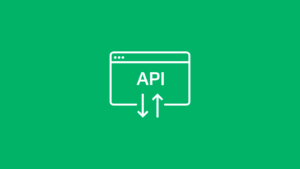Simplifying Big Data with Data Orchestration
Digital businesses must leverage big data to innovate and optimize. See how big data orchestration can simplify and streamline data from disparate sources.

According to Gartner research, by 2025, artificial intelligence requirements will drastically increase the volume of data in 75% of enterprises. Organizations can prepare by implementing big data orchestration.
Data is quickly becoming one of the most critical assets available to the enterprise — for day-to-day operations, product development, marketing and more. Data fuels the analytics that optimize processes, shipping routes, inventory and business decisions while improving the AI and machine learning algorithms that underlie a host of new technologies, from chatbots to digital twins.
The need for data-driven business models will continue to increase as consumer expectations, market pressures and technologies evolve. Organizations must address three central challenges before effectively scaling and leveraging big data initiatives.
- The difficulty of real-time data collection
The older data is, the less useful it becomes. This is especially true in logistics and operations, where small changes can quickly impact entire systems. Leaders need data that’s highly relevant, up-to-date and complete to make informed decisions. As a result, the need for real-time or near-real-time data analytics is increasing, putting strains on infrastructure, data pipelines and budgets. - The complications of a disjointed ecosystem
Data is diverse. It can be structured, unstructured, semi structured, or it can be batched or streaming data. Data can be stored in Hadoop clusters, or through Amazon EMR or, increasingly, closer to the end-point as edge computing technologies mature. In order to be useful, big data must be extracted, processed, and made readily available to users and applications across the enterprise (hopefully in real-time). - The need for global data governance
Organizations must be able to standardize and centrally manage governance across disparate data localities while navigating a patchwork of regulatory regimes based on geography and managing evolving security requirements.
At the heart of these challenges is that much of an organization’s data may be siloed data. It’s common to deploy data platforms, BI tools and data analytics software ad-hoc and have individual departments undertake big data/Hadoop initiatives.
Complicating this issue is the often slow rollout of cloud computing. Many organizations migrate databases and applications to public or private clouds independently and leave key data stores on-premises (often to simplify compliance requirements). Managing big data between disparate on-prem data centers is one challenge; big data management in a hybrid cloud environment is an additional burden.
An increasing reliance on multiple cloud vendors to avoid vendor lock-in means that silos don’t just exist on premises but across cloud providers, too.
What is Big Data Orchestration?
Big data orchestration refers to the centralized control of processes that manage data across disparate systems, data centers or data lakes. Big data orchestration tools enable IT teams to design and automate end-to-end processes that incorporate data, files and dependencies from across an organization without having to write custom scripts.
Big data orchestration tools are middleware applications that sit above data warehousing tools such as Hive and Spark and below the platforms and applications (AI, BI, CRM, etc.) that utilize the data.
By providing pre-built connectors and low-code API adapters, data orchestration platforms enable IT teams to rapidly integrate new data sources and existing data silos into ETL automation and big data processes. Big data orchestrators also enable IT professionals to manage data access, provision resources and monitor systems from a centralized location. This can all be done across on-premises data warehouses and cloud-based databases without having to develop new custom scripts.
Building a data orchestration layer in the cloud
More reliance on cloud-based infrastructure is almost inevitable as IT and enterprises seek value from increasingly large big data stores. Building and maintaining physical data centers is cost-prohibitive for many organizations, while adding servers into existing infrastructure is slow and inefficient.
IT teams are taking to the cloud (Amazon AWS, Google Cloud, Microsoft Azure, etc) to support the growth of big data and achieve:
- Cost reduction: Cloud computing is often cheaper than installing, configuring and maintaining on-premises servers, which run the risk of sitting idle. Power and cooling don’t have to be accounted for, updates and patches are handled by the vendor and, with the right tools, it’s easy to automate day-to-day functions.
- Scalability: A common problem with managing data on premises is that data volumes are rarely static. There are, at times, far larger workloads than usual. Cloud-based infrastructure enables IT to quickly scale resources to meet unpredictable spikes in demand, provisioning and de-provisioning virtual machines based on dynamic, real-time needs.
- Flexibility and agility. Cloud-based infrastructures provide an unmatched level of flexibility and agility in data management. Organizations can experiment with new technologies and solutions without substantial upfront investment. This adaptive approach provides an opportunity to unify a variety of tools and services across different cloud platforms. It’s also supportive of more informed decision-making.
However, most legacy, on-premises workflow orchestration platforms were designed for homogeneous IT stacks, which poses a problem: how to manage data between incompatible storage systems without creating bottlenecks.
The answer, in part, is to create a data orchestration layer between on-prem and cloud-based data stores. The orchestration layer manages the integration of disparate tools, making it easier for IT teams to automate and manage data across hybrid-cloud and multi-cloud environments.
Advantages of big data orchestration tools
Big data orchestration tools provide the integration capabilities for IT teams to develop and manage data processes that span disparate technologies. These tools can be listed under a variety of names — service orchestration, workload automation, hybrid data integration, data pipeline orchestration, etc.— but include a standard set of capabilities.
Each type of tool plays a key role in maintaining the modern data stack.
- API adapters: IT teams can use these to easily integrate virtually any existing (or future) technology across hybrid and multi-cloud environments.
- Script-language independent: IT can still write scripts, if needed, in any language they choose
- Resource provisioning: AI and ML algorithms intelligently manage infrastructure based on dynamic, real-time needs and historical data analyses.
- Monitoring: Real-time batch process monitoring enables auto-remediation, optimization, and alerting.
The future of big data
As new technologies evolve, big data is likely to become more heterogeneous and complex. Today, advancements in IoT, 5G and edge computing are moving data closer to the “edge.” For example, computing and processes are running at endpoints in hospitals, manufacturing facilities, fulfillment centers and more. This requires new connections to IT infrastructure.
Meanwhile, a wider range of use cases will mean increasing volumes of big data will be necessary to train high-performance AI tools and more.
At the same time, governments and privacy concerns will mandate patchworks of data regulations that organizations will need to adopt and adapt to continuously.
To meet these demands, IT teams will need to centralize control over file systems, datasets and data processes by leveraging extensible automation tools that achieve job orchestration and streamline data delivery across the organization. Furthermore, data quality will become a differentiator as systems and people demand more information in all contexts of life.
Data orchestration FAQs
What is the meaning of data orchestration?
Data orchestration is the comprehensive management and coordination of data flows between different systems and processes in an IT infrastructure. It involves aligning data sources, data processing and data storage to ensure data is readily available for various applications.
How do you orchestrate data?
There are several steps involved in data orchestration. First is the integration of disparate data sources, or aggregating data from different formats and locations and transforming it into a usable state, then distributing it to the appropriate systems for processing and analysis. Then, you can apply the power of tools and platforms like ActiveBatch, Apache Airflow, Prefect or Luigi to design data workflows that automate these tasks using robust scheduling, error handling and dependency management.
What is data orchestration vs. data automation?
Orchestration and automation are closely related but distinct concepts. Data orchestration focuses on data flow coordination and management, while data automation reduces manual intervention in data-related processes. Automation can be a component of the orchestration process, as it takes care of the individual tasks that make up the larger picture of orchestrated workflows.
What is data orchestration vs. ETL?
Data orchestration and extract, transform and load (ETL) differ primarily in their scope and focus. ETL is concerned with data extraction from various sources, data transformation into a structured format and data loading into systems for analysis. Data orchestration includes a broader range of activities for the coordination of data flows across the entire data lifecycle.
Ready to simplify your data warehousing with workload automation?
Schedule a demo to watch our experts run jobs that match your business requirements in ActiveBatch. Get your questions answered and learn how easy it is to build and maintain your jobs.







